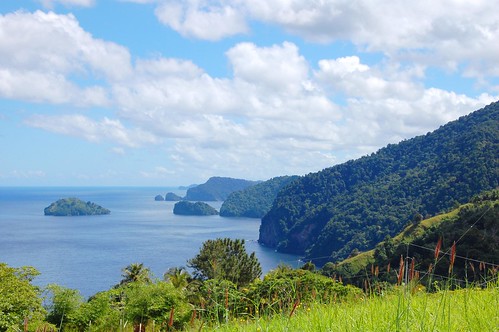 In addition to the internship with Christopher Cozier and working with Alice Yard, I have recently taken on an independent study with Noble Douglas at the Lilliput Children’s Theatre. Not only has she allowed me to take a dance class with her students once a week and drama on Saturdays, but I am taking a hands-on role in a Mas Camp by helping to finalize costumes and create headpieces. This means a lot of fine details in decoration and included individually attaching sequins to collars for the four year olds. Given that I have never worked in a costume shop, every task is interesting, but since I am a visual and performing arts person, this venue and Mas Camp project really suits my interests and I look forward to new activities every week.
In addition to the internship with Christopher Cozier and working with Alice Yard, I have recently taken on an independent study with Noble Douglas at the Lilliput Children’s Theatre. Not only has she allowed me to take a dance class with her students once a week and drama on Saturdays, but I am taking a hands-on role in a Mas Camp by helping to finalize costumes and create headpieces. This means a lot of fine details in decoration and included individually attaching sequins to collars for the four year olds. Given that I have never worked in a costume shop, every task is interesting, but since I am a visual and performing arts person, this venue and Mas Camp project really suits my interests and I look forward to new activities every week.Though I must say, creating these 100+ costumes is a team effort. Parents, older school children, a Trinity student like me, and Noble Douglas herself, work together into the night to glue, sew, paint, and glamorize these outfits. I suppose this is the British influence of tea time which makes group projects into a social gathering for introductions, life lessons, and beverages. I just like the idea that people voluntarily take time out of their day to create intricate costumes for children, who will essentially walk in a parade one day and dance on stage for two minutes. I’ve already learned that it’s not about the monetary worth of the final product, but about the process of creating mas and the purpose of it in the lives of the children. Process, purpose, not the product: an interesting way to participate in art. I look forward to watching the kids prance and masquerade across that stage next week in all their glory.
“Mas” short for “masquerade,” which means 'to perform' and 'to transcend,' is the basis of Carnival in Trinidad. Costumes represent people in history and fictional characters of past cultural celebrations. While on Noble Douglas’ back porch, I was sewing antlers onto a headband and the young students in the open-faced studio behind me were presenting research in drama class. They spoke about some of the characters represented in Carnival (including the costumes we were making then) and gave preliminary ideas of their own ‘dream carnival.’ Besides being drawn in by the Trinidadian twang such young children have already learned, it was intriguing to learn about the history of Mas while they presented. I can already tell that this ongoing experience will be valuable to me as an artist, student, Barbadian, and human being in the world.
Perhaps my final project can involve children or children's artwork or costumes. After all, Mas is child’s play.

